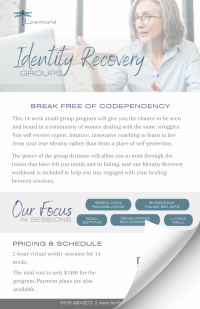Today we’re diving into a topic that affects so many relationships—protest behavior. If you’ve ever been caught in a cycle of emotional push and pull with your partner, chances are attachment styles are at play.
Understanding how avoidant and anxious attachment styles express protest behavior can help you navigate these dynamics without getting sucked into the emotional whirlwind. If you’re ready to break free from unhealthy relationship patterns, stay tuned!
What Is Protest Behavior in Relationships?
Protest behavior is what we do when we feel emotionally disconnected from our partner and are desperate to reestablish closeness—but in unhealthy ways. Instead of directly communicating needs, we act out.
Protest Behavior in Anxious Attachment Styles
For those with an anxious attachment style, protest behavior often looks like:
- Excessive texting or calling when they feel ignored
- Threatening to leave the relationship but not really meaning it
- Acting out with jealousy or passive-aggressiveness
- Making dramatic gestures to get attention
Protest Behavior in Avoidant Attachment Styles
For the avoidantly attached, protest behavior is a bit different. Instead of chasing, they withdraw and shut down, but it’s still a way to protest emotional disconnection. This can look like:
- Giving the silent treatment or stonewalling
- Becoming hyper-independent and dismissing the relationship as unimportant
- Picking fights over minor issues to create distance
- Ghosting or disappearing for a while to regain control
How to Respond to Protest Behavior Without Drama
Now, if you’re in a relationship with someone exhibiting these behaviors, your first instinct might be to react emotionally—but that only fuels the cycle. Instead, here’s how you can respond effectively:
Stay Grounded in Your Response
Your partner’s protest behavior is about their emotional wounds, not your worth. Take a deep breath and don’t take the bait.
Don’t Match Their Emotional Energy
If they’re withdrawing, don’t chase. If they’re seeking attention through drama, don’t reward it with an emotional reaction.
Set Clear Boundaries With Calm Communication
Respond with calm, clear communication. “I see that you’re upset. I’d love to talk when we can have a constructive conversation.”
Validate Feelings Without Enabling Unhealthy Behavior
Acknowledge feelings without reinforcing the unhealthy behavior. “I get that you’re feeling hurt, and I’m here to listen, but let’s talk when we can both approach this calmly.”
Heal Your Own Attachment Wounds
If you’re constantly triggered by your partner’s protest behavior, it might be a sign that your own attachment wounds need healing.
Breaking Free From Toxic Relationship Patterns
The key to breaking free from toxic relationship cycles is self-awareness and healing. If you’re tired of repeating the same patterns and want to learn how to build secure, healthy connections, I can help.
Let’s work together to heal those attachment wounds and create relationships that feel safe, loving, and fulfilling.




